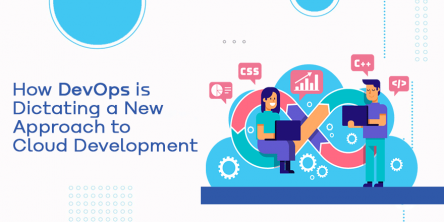Seven Ways to Improve the Lifetime Value (LTV) of App Users

Developers judge the app's success based on download numbers or position in the app store ranks. But, this number doesn’t indicate whether an app is financially successful. Getting more downloads or higher ranking are signs of successful apps, but they don’t indicate how much value users are generating over the period in which they use the app.
One can say - ARPU (Average Revenue Per User) helps to measure the value generated by the users, but it’s quite different than LTV (Life Time Value). To calculate ARPU, simply take the total revenue and divide it by the total downloads that give the average revenue generated by each user. ARPU is a relatively simple calculation as compared to LTV.
What is Life Time Value (LTV)
Customer lifetime value is defined as a present value of the potential contribution of the customers for business over a period of time.
Ways to Improve LifeTime Value
1. Try to keep customer satisfaction ratings high : Always work in a direction that lead to increase the customer satisfaction rate that means developers should focus on the feedback of the end users. Try to understand what users exactly want. Always welcome users’ feedback, and then respond to them immediately and intelligently. Add reviews and ratings features to the app. Also, developers should provide valuable content and demo video to give an overview of the app. Spread the news about the app via ads on popular sites, also give tips and coupons that help to increase customer satisfaction rates.
2. Work on every customer interaction : Take an advantage of each customer order by developing a loyal relationship with them. Always try to build a trustful relationship with customers that help to create the brand positivity in their mind. When customers use the app, reward them through the coupons, points or discounts. Also, make a special scheme for the first time app users.
3. Always feel them your presence : When customers are using the app very first time, developers should realise that they are with their customers at anytime. Developers can achieve this through content marketing strategy, social media engagement, frequent app upgrades, excellent communication and customer relationship.
4. Communicate regularly and be responsive : Always stay in touch with customers through the ads and notifications that help to create an app deep image of the app in user’s mind. Maximum use the social media to reach out to the customers, take customers' suggestions seriously and work out on that direction.
5. Offer Referral Programs : In a cut-through competition, referral programs, with the help of affiliate referral program software, help to attract more buyers and build a strong bonding between buyers and developers. Developers should offer discount coupons, free membership or free products as a referral bonus.
6. Create a sense of urgency : The word ‘Urgency’ is a psychological motivator. To attract more customers and increasing the interest of existing customers, developer should offer coupon codes that viable for a great discount. For example Groupon, provide an attractive way to increasing the users. An effective remarketing crusade is a great way to clear stock and brings customers back to the app. Such a crusade helps to active latent customers.
7. Segment customers to maximize profit : The main aim behind any business is to maximize the profit. Segment the customers through core attributes, common attributes to consider include past purchase frequency, past purchase value, acquisition channel, location and demographic idea. Determine few groups of users, test different offers to them, and optimize for both revenue and profit.
Life Time Value helps to take the app to the next level. This article helps to improve the LTV and convert one-shot customers to lifetime customers. Each strategy discussed here will have a direct impact on customers’ life time value.
Similar Articles
Mobiles and by extension, mobile apps are the basis for the modern mobile device and take it beyond a mere communication tool. In today’s world, information has to be available at our fingertips and people want mobile applications to do instantly what websites used to do before, give information and details instantly, anytime & anywhere
In the ever-evolving landscape of app development, embracing innovation is not just a choice but a necessity. Enter serverless architecture, a transformative paradigm reshaping how we approach app development.
EdTech developers leverage modern technology to create immersive and engaging learning apps. A successful product relies on solid technology, including front-end frameworks like React.js, offering efficient development and incorporating cutting-edge features like gamification and voice recognition for a standout user experience in the education industry
Internet of Things, or IoT, is a fast-growing concept that promises a transformation in how we live and work. It enables us to connect and control smart devices such as wearables, medical devices, sensors & more using mobile apps. IoT has impacted many aspects of our lives, and some of the most notable are home building, logistics, healthcare, and more.
Mobile app development has become an essential part of the digital ecosystem as mobile devices have become more prevalent than desktops or laptops. Regarding mobile app development, two popular approaches are Xamarin and native mobile app development.
With React Native becoming one of the preferred tools for developing mobile and web apps, there has been a growing focus on outsourcing software development based on this language
With over 6.3 billion estimated smartphone users worldwide, mobile app usage is growing exponentially. Studies have shown that Americans check their phones 262 times daily, once every 5.5 minutes! People check their phones at home, at work, on the street, while eating, in bed, and cars.
With the number of companies embracing digital solutions growing continuously, there is also an increasing demand for cloud services. Cloud development services help businesses (small or big) take advantage of digital transformation and to move their infrastructures to the cloud.
Businesses nowadays are fully enmeshed in the outstaffing and outsourcing trend. In order to boost production and take advantage of the expertise of specialized experts, it is safe to assume that modern professionals are more reliant on outsourcing









